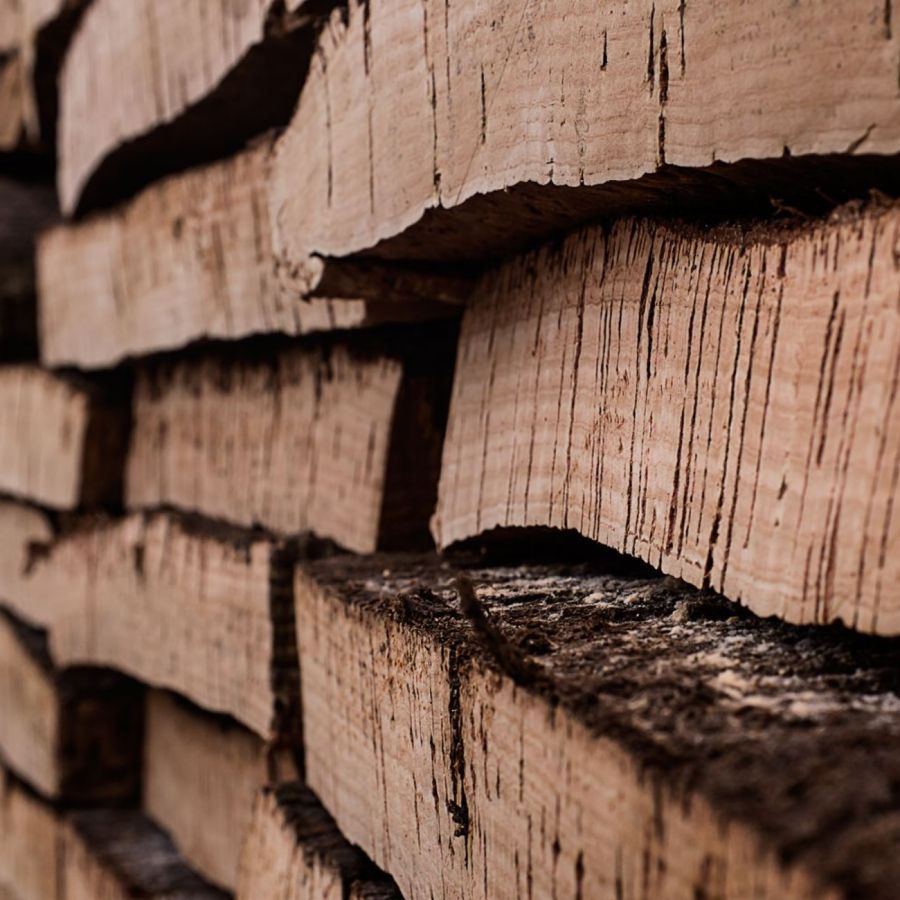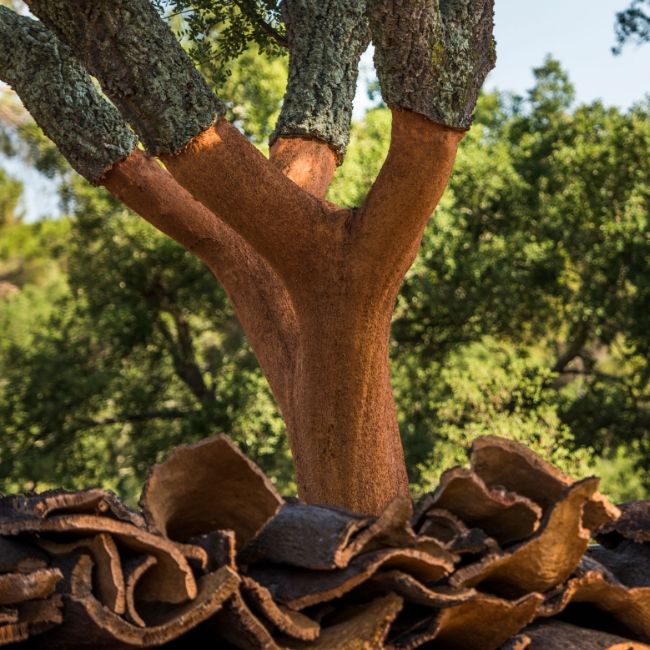natural
renewable
reusable
recycable

Cork is the bark of the cork oak Quercus Suber L. It is a plant tissue that regenerates naturally in the tree and is made of a hive of microscopic cells that have a gas identical to air and are coated mainly with suberin and lignin. It has a wide range of applications and attributes that no technology has yet managed to imitate, match or surpass.
One cubic centimeter of cork contains around 40 million cells.

It is a natural, reusable and recyclable raw material, extracted from cork oaks without ever harming the normal development of the species or damaging the tree.
The extracted cork is fully used in the production of its various applications. After being transformed and fulfilling its function, it can be reused in the production process. One example is the process of recycling cork stoppers which, although they will never be used again as a sealant, can be crushed and the granules resulting from this process will give rise to a variety of products such as coverings, shoe soles, fishing buoys, among others.
The numerous qualities of cork can only be understood following a meticulous analysis of its chemical composition, to identify its various components and their average values:
Suberin
Lignin
Polysaccharides
Ceroids
Tannins
The main component of cork is suberin, a mixture of organic acids that coat the walls of the cork cells, preventing the passage of water and of gases. The properties of suberin are notable: it is practically infusible and is insoluble in water, alcohol, ether, chloroform, concentrated sulphuric acid, hydrochloric acid, etc.
The cells grouped in a characteristic alveolar structure are the essence that defines cork. A cubic centimetre of cork contains nearly 40 million cells, arranged in rows perpendicular to the cork oak trunk.
Each cell is shaped like a tiny pentagonal or hexagonal prism, the height of which is no more than 40 to 50 micrometres (= thousands of a millimetres). The smallest cells measure 20 or as little as 10 micrometres. Whatever their size, all the cells are filled with a mixture of gases similar to air. Around 60% of a plank of cork is composed of gaseous elements, which explains its extraordinary lightness. The combination of these small cushions of air make cork so remarkably compressible. At the same time, suberin makes the walls of the cork cells impermeable and therefore airtight. The gas they contain cannot escape, which is the reason for the elasticity of the tissue and also its low thermal conductivity. It also has an average density of about 200 kg/m3.
Over 50% of its volume is air, which makes it very light. It weighs just 0.16 grams per cubic centimetre, and it can float.
It is totally impermeable to liquids and practically impermeable to gases, thanks to the suberin and cerin present in the composition of cork cells. Its resistance to moisture allows it to grow old without deteriorating.
It can be compressed to around half its thickness without losing any flexibility, and it decompresses, recovering its initial shape and volume as soon as it ceases to be compressed. This flexibility is given by its airtight cells containing a gas mixture similar to air. It is the only solid that when compressed on one side does not increase in volume on the other axis. It is able to adapt to variations in temperature and pressure without suffering variations, due to its elasticity.
The 40 million cells in each cubic centimetre of cork act as a real decibel absorber, making cork bark an excellent sound and vibration insulator. Its molecular structure allows it to absorb heat and retain it for a long period of time.
Slow burning
The slow combustion of cork makes it a natural fire retardant and a kind of barrier against fires. Cork burns without a flame and does not emit toxic gases during combustion.
Antistatic and anti-allergic
It does not absorb dust and prevents the appearance of mites and, therefore, contributes to protection against allergies.
Wear resistance
Cork is resistant to wear, thanks to its honeycomb structure, which makes it less affected by impact or friction than other hard surfaces.
Chemical structure
Cork cells have a pentagonal and sometimes hexagonal prism shape. The height of one of these tiny prisms is around 40 to 50 micrometres ( = thousands of a millimetre). The smallest cells measure 20 or even 10 micrometres. On average, there are around 40 million cells in each cubic centimetre of cork, or approximately 800 million cells in a single cork stopper.
